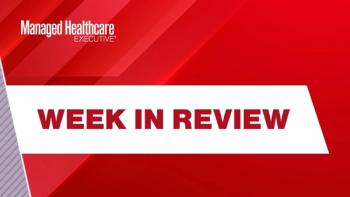
NEJM Study: Caps on Out-of-Pocket Costs for Specialty Drugs Reduce Patient Spend by 32%
Research model shows that caps on out-of-pocket costs don't result in higher health plan spending.
State-mandated caps on out-of-pocket costs for specialty drugs reduced spending by patients with the highest bills by 32% and did not result in increases spending by health plans, according to research results reported in tomorrow’s New England Journal of Medicine.
Using complex statistical method and modeled values, a research team led by Kai Yeung, Pharm.D., Ph.D., of Kaiser Permanente Washington Health Research Institute estimated that the caps in the three states that imposed them — Delaware, Louisiana and Maryland — reduced out-of-spending costs by $351 per person per month (from $1,109 down to $758).
That finding was limited to people with out-of-pocket costs in the 95th percentile. As expected, the caps had less of an effect on the lower percentiles; for example, the researchers calculated that they reduced out-of-pocket costs for those in the 90th percentile by $74 per person per month ($450 with the cap, $523 without).
Yeung and his team made the with-cap and without-cap comparison by pairing the three “intervention” states with laws that cap out-of-pocket expenses with three neighboring “control” states without cap laws New Jersey (with Delaware), Arkansas (with Louisiana) and Virginia (with Maryland). They modeled the without-cap costs based on the experience in the control states and then applied to the states with the caps. Their dollar figures are derived from models, not actual tallies.
Legislation to put ceilings on out-of-pocket costs for specialty drugs has been introduced in 11 states, but they have become law only in Delaware (in 2014), Louisiana (in 2015), and Maryland (in 2016). Critics of caps say they have the drawback of shifting costs to health plans that will eventually lead to premium increases, which, in turn, may affect access to healthcare. But Yeung and his colleagues found that the cap did not affect health plan spending; for example, average health plan spending on specialty drugs with the cap was $821 per person, per month and without it, $817.
“Since a primary function of insurance is to spread the financial risk of catastrophically high spending for a small population, we interpret the caps as strengthening this risk-spreading function without detectably increasing spending for the broader population,” wrote Yeung and his co-authors in the discussion section of the paper.
The raw material for their study was claims data from Aetna, Humana and UnitedHealthcare commercial plans, by way of the Health Care Cost Institute. They focused on drugs for “diseases of interest”: rheumatoid arthritis, multiple sclerosis, hepatitis C, psoriasis, psoriatic arthritis, Crohn’s disease, or ulcerative colitis. Just over a third (36%) of the study population had multiple sclerosis. And they used a CMS threshold that works out to $600 per 30-day period to identify specialty drug claims.
The drugs in the study with the greatest number of prescription claims were adalimumab (Humira), 18,158 claims; etanercept (Enbrel), 13,589 claims; glatiramer acetate, 6,670 claims; and interferon beta-1a (Rebif), 6,646.
Newsletter
Get the latest industry news, event updates, and more from Managed healthcare Executive.

















































